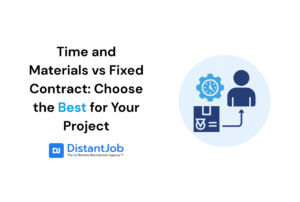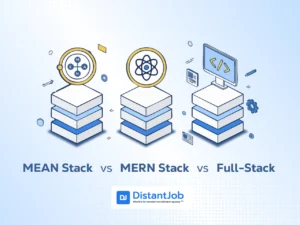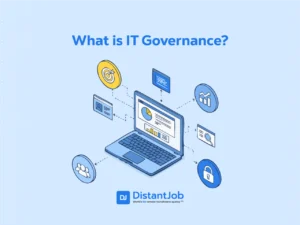Behavior interviewing is an interviewing method where questions are based on the candidate’s past actions and experiences, rather than on what they say they would do in a specific situation. The approach is based on the concept that the best way to predict how someone will perform is to review how the person acted in the past. Instead of asking a candidate, “What would you do when dealing with a difficult task?” in a behavioral interview, you would ask, “Tell me about a time when you dealt with a difficult task.”
However, getting it right can be troublesome. Mishandle it, and behavioral interviewing loses its true value. It’ll become a traditional interview, failing to reveal your candidates’ best qualities due to bias, subjectivity, and broad answers.
If you are a candidate, prepare yourself. Behavioral interviewing technique will give you a chance to shine and show your best traits, as long as you’re willing to know how to play your cards well.
With this step-by-step guide, you’ll learn how to leverage behavioral interviewing to make better hiring decisions, find the perfect candidates, and land your dream job.
Behavioral Interviewing Vs Traditional Interviewing
The difference between a behavioral interview and a traditional one is that in a behavioral interview, you let the candidate recount their story, highlighting their ability to perform job functions and succeed in the role. In contrast, traditional interviewing primarily seeks to gather general background information about a candidate, asking questions such as: “What are some of your strengths?”, “Why should we hire you?”, or “Tell me about yourself”.
Traditional Interview’s Bias
Traditional interview is not wrong, but highly biased. For instance, well-dressed or socially adept candidates might be rated higher, even if their competencies are questionable. Traditional interviews tend to introduce bias into the hiring process.
A 2023 study from the International Association of Applied Psychology compared interview ratings in an “honest” condition (where participants were instructed to answer truthfully) with an “applicant” condition (where they were instructed to act as if they were applying for an attractive job, which could involve exaggerating or making things up).
The conclusion was that it’s easier for applicants to get scored better while faking it in traditional interviews. Traditional interviews are more susceptible to the effects of impression management.
Behavior Interview’s Success
Meanwhile, the behavioral interview’s success rate is known to be around 55%, against 10% of traditional job interviewing. Behavioral interviews help mitigate bias by focusing on specific workplace situations and competency.
| Behavioral Interviewing | Traditional Interviewing |
| Focus on past experiences and feats | Gains general background information |
| Candidates reflect and give concrete examples | Asks hypothetical, subjective questions |
| Reduces bias (gender, age, and ethnicity) | Prone to bias (well-dressed, overconfident) |
| Focus on competencies | Candidates give answers lacking specific details |
How to Conduct a Behavioral Interview
To conduct an effective behavioral interview, several important steps are recommended. In summary, you will prepare questions to assess relevant skills and competences, utilize the STAR approach, ask follow-up questions, and create a rating scale.
Step 1: Craft Questions
Before the interview, meet with other recruiters and stakeholders to agree upon the most important skills and qualities required. Ensure your interviewing team is consistent to reduce bias.
Once these competences are prioritized, you can start preparing the questions. All candidates should receive the same questions in the same order and wording. Review questions and scorecards together as a team to ensure a consistent approach and interpretation of answers.
These questions have a two-fold functionality. They reveal the candidate’s ability to achieve job goals based on their previous experience and reveal specific behaviors deemed key to success.
Behavioral questions can be prepared for, leading to rehearsed answers. Interviewers need to probe deeper to get the best insights.
Step 2: Use the STAR Approach or CAR Approach
The STAR method (Situation, Task, Action, Result) is a popular and effective tactic for structuring both behavioral interview questions and candidate responses. STAR encourages the candidate to tell a story by describing:
- Situation: A specific situation where they demonstrated a particular behavior, providing context without unnecessary details.
- Task: The specific tasks involved in addressing that situation, clarifying their role and responsibility.
- Actions: The specific actions they took to complete the required tasks, highlighting how they added value and made logical decisions.
- Results: The results of the actions. They might include concrete examples, quantifiable achievements, and lessons learned.
If STAR doesn’t bring you results (as people tend to forget the specific tasks involved), a similar framework is CAR:
- Challenge: Instead of asking what was going on (Situation), you specifically ask for a challenge they were facing.
- Actions: Now paired with tasks.
- Results: The results of actions.
STAR is a comprehensive method that provides a detailed narrative, while CAR is a more concise approach that emphasizes results.
Step 3: Ask Follow-Up Questions
Even with well-crafted questions, dig deeper to gather more information. Follow-up questions prompt candidates to elaborate. Examples include:
- “How did you do that?”
- “What did you do with the information?”
- “What did you learn from…?”
- “How did you handle…?”
- “How so?”
- “Tell me more about…”.
It’s important to clarify what you hear. You are dealing with another human being. Make it an interactive conversation.
Step 4: Create a Rating Scale
A standardized rating scale is crucial for measuring how a candidate’s responses relate to the job requirements and for evaluating each candidate equally. Ensure that every interviewer on your team knows how to use this scoring system; it’s the key to fair and consistent candidate evaluations. You can assign point values to quantify ratings.
Here’s a sample rating scale you can try:
| Rating | Description |
| 5 | Far Exceeds Requirements |
| 4 | Exceed Requirements |
| 3 | Meets Requirements |
| 2 | Bellow Requirements |
| 1 | Significant Gap |
You might assign each candidate to a rating or, better yet, all key behaviors to individual ratings.
Mistakes to Avoid
As an interviewer, you want to avoid common interpretation mistakes that undermine the effectiveness of behavioral interviews, ensuring genuine insights.
Mistake 1: Staying Surface Level and Not Digging Deeper
Sometimes candidates might anticipate and predict questions, potentially leading to rehearsed answers that offer little but a pleasant success story.
Dig deeper. Clarify what you hear until you feel satisfied that you’re seeing the real person. Remember, the behavioral interview is more of an interactive conversation rather than a simple question-and-answer session. Probing deeper also helps in identifying applicants who might exaggerate (or blatantly lie about) information.
Mistake 2: Asking Leading Questions
Don’t prepare questions that lead candidates toward a specific answer. For instance, asking “Tell me about a time when you adapted to a difficult situation and how you did it”. Such questions can encourage candidates to avoid sharing failure or genuine challenges.
Instead, you can ask them to tell you “about a difficult situation you faced at work”. And they will share about the type of work environment they find challenging and how they deal with it, or how they cope with it. It’s far more insightful information: natural problem-solvers will love to discuss their strategies for overcoming those challenges.
Sample Behavioral Interview Questions
Here are some sample questions to consider for your behavioral interviews.
Resilience Under Pressure
“Walk me through a time you faced a significant unexpected obstacle on a project with a tight deadline. How did you assess the situation, what immediate steps did you take, and what was the ultimate outcome?”
“Describe a specific instance where you were assigned a critical task or project for which you initially lacked the necessary skills or knowledge. What was your systematic approach to acquiring that expertise, and how did you ensure the successful completion of the assignment?”
Cultivating Meticulousness and Accuracy
“Can you recall a time when identifying a subtle but critical error significantly impacted a project or prevented a major issue? Describe the situation, how you uncovered the detail, and the specific steps you took to address it.”
“Tell me about a time you discovered a significant oversight in your own work, or a team’s work, after it had been submitted or was nearing completion. What was your immediate reaction? What actions did you take to rectify the situation, and what specific safeguards did you put in place to prevent similar errors in the future?”
Effective Communication
“Share an example of a time when you needed to influence a decision or gain buy-in from a skeptical audience or senior stakeholders. Describe your strategy for conveying your message, the specific language or approach you used, and the ultimate impact of your communication.”
“Describe a situation where you had to deliver difficult or unpopular news to a team or an individual. How did you prepare for that conversation? What specific language did you use to convey the message with clarity and empathy, and what was the long-term impact on the relationships or project?”
Resolving Workplace Conflicts
“Think about a time you facilitated a resolution between two colleagues with significantly differing viewpoints on a critical project. What was the core of the disagreement? What steps did you take to understand both perspectives, and how did you guide them toward a constructive outcome?”
“Recount a specific instance where you had a significant disagreement with a team member regarding a work-related decision or approach. What was the nature of the conflict, how did you approach the conversation, and what steps did you take to reach a mutually agreeable resolution or compromise?”
Fostering Innovation and Creativity
“Describe a specific challenge or problem at work where traditional solutions were not effective. How did you approach brainstorming unconventional ideas? What specific creative solution did you propose, and what was the tangible impact or result of that innovative approach?”
“Tell me about a time you successfully championed a novel or unconventional idea to your colleagues or leadership, despite initial resistance or skepticism. How did you articulate your vision, address potential concerns, and ultimately gain support for your creative proposal?”
Making Sound Decisions
“Share an example of a critical decision you had to make with incomplete or ambiguous information. What was your process for gathering available data, identifying potential risks, and ultimately making the best possible choice given the circumstances?”
“Describe a significant decision you made that had a direct and measurable impact on your colleagues’ workflow, responsibilities, or the overall team dynamic. How did you anticipate and address potential consequences, and what was the ultimate positive or negative effect of your decision?”
“Recount a recent decision you made that you consider to be one of your best professional choices. What were the alternatives you considered, what factors led you to that particular decision, and what positive outcomes resulted from it?”
Adapting to Change and New Environments
“Describe a period in your professional life where there was a rapid and significant shift in priorities, team structure, or company direction. How did you personally adapt to these changes, and what specific actions did you take to help your team or colleagues navigate the transition effectively?”
“Think about a time when your role or responsibilities underwent a significant evolution or you transitioned into a completely new area. What were the biggest challenges you faced in that transition? How did you proactively upskill or adjust your approach? What did you learn about your own adaptability?”
Setting and Achieving Goals
“Walk me through a significant professional goal you set for yourself that required considerable effort and strategic planning to achieve. Describe your process for breaking down that goal, the specific steps you took, and how you measured your progress along the way.”
“Tell me about a time you pursued a professional goal with significant dedication, but ultimately fell short of achieving it. What were the primary obstacles that prevented you from reaching it? What lessons did you learn from that experience? How did you apply those learnings to future endeavors?”
Conclusion
The bottom line is that you can predict a candidate’s future behavior by probing their past stories. Behavioral interviewing is an opportunity for companies to move beyond superficial impressions and uncover the potential of their candidates, leading to more successful and enduring hires. For candidates, it’s a chance to showcase their unique experiences and strengths.
However, maybe you might think you have no time for this. So why not let hiring experts handle this part for you? With DistantJob, you get the best hire in the world at around half the cost in the U.S.. No hidden fees. No fine print. Book a discovery call now, and let us get you the best collaborator for your company!





